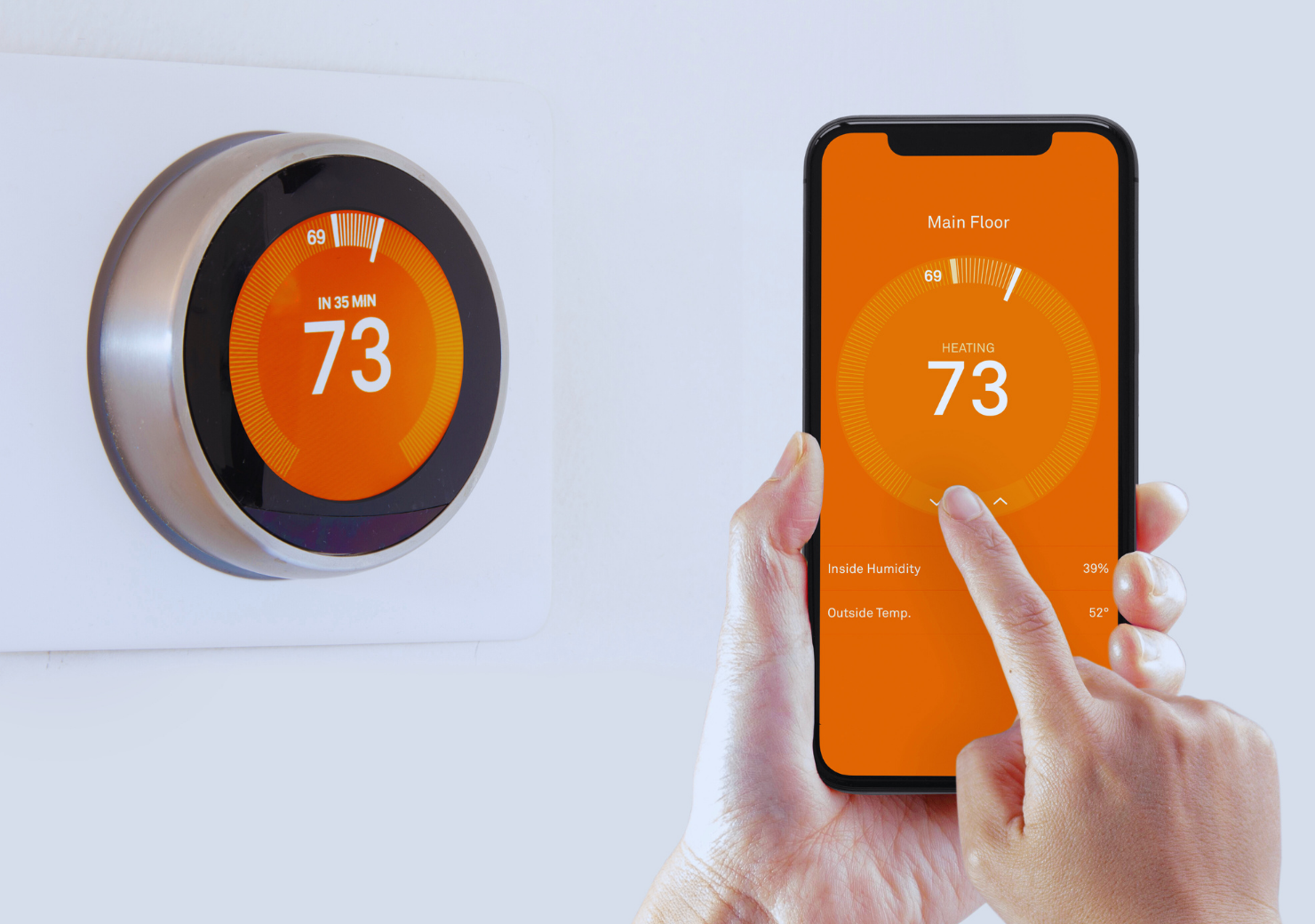Smart thermostats are innovative devices that enable us to manage our home’s heating and cooling systems more efficiently. These devices provide both increased comfort and energy savings, making them an excellent entry point for those looking to explore the world of home automation. So, what should you consider when choosing a smart thermostat? This guide covers all the details to help you find the model that best suits your needs.
What is a Smart Thermostat and Why is it Necessary?
Smart thermostats are modern devices that work with Wi-Fi connectivity, allowing you to control your home’s temperature remotely via mobile devices. Beyond manual adjustments, these devices adapt to your daily habits, automatically optimizing your home’s climate.

Why is it Necessary?
Smart thermostats offer significant benefits in terms of both comfort and energy savings. They are especially convenient for those with a busy lifestyle or who travel frequently, allowing them to control their home’s temperature remotely. Moreover, they can help reduce energy bills and minimize your environmental impact.
What is the percentage of people worldwide who use smart thermostats in their homes?
According to https://www.abiresearch.com/, the percentage of people worldwide who use smart thermostats in their homes:

Here is a pie chart comparing global smart thermostat adoption in 2023 and the projected adoption for 2029. The chart highlights the percentage of users and non-users for both years, illustrating the expected growth in adoption.
Key Features to Look for in a Smart Thermostat
When choosing a smart thermostat, the features it offers should align with your needs. Here are the key features to consider:
Learning Capability: Some smart thermostats analyze your habits and create automatic schedules. For instance, if you wake up every day at 7 a.m., the device can adjust the temperature accordingly.
Remote Access: The ability to adjust the temperature via mobile devices is especially beneficial when you’re away from home.
Geofencing: This feature uses your smartphone’s GPS to determine if you are home. The thermostat can switch to energy-saving mode when you leave and return to a comfortable temperature as you approach home.
Energy Usage Reports: Some models provide detailed reports, allowing you to analyze your energy consumption and identify areas for improvement.
Zonal Control: The ability to independently control the temperature in different areas of your home ensures optimal temperature distribution, particularly in larger houses.
Smart Home Integration: Compatibility with platforms like Alexa, Google Assistant, or Apple HomeKit allows seamless operation with other smart home devices.
Best Smart Thermostats for Beginners
If you are new to smart thermostats, consider these beginner-friendly models that offer simplicity and high performance:
Ecobee Smart Thermostat Premium:
- Balances temperatures with built-in sensors.
- Offers Alexa support.
- Suitable for multi-room homes.
Google Nest Learning Thermostat:
- Uses AI-based programming to learn user habits.
- Features a sleek, modern design.
- Ideal for those seeking convenience through AI.
Amazon Smart Thermostat:
- Affordable with essential features.
- Perfect for Alexa users.
- Easy setup and a simple app interface.
- Compatibility Matters: Pairing Your Smart Thermostat with Your HVAC System

One of the most critical factors when choosing a smart thermostat is ensuring it is compatible with your existing heating and cooling (HVAC) system. Here’s what to consider:
C-Wire Requirement: Most smart thermostats require a “C-wire,” which provides continuous power. If your system lacks this, you may need an adapter or a model that doesn’t require a C-wire.
System Type: Check whether the thermostat supports your system, such as single-stage, multi-stage, or heat pump setups.
Professional Advice: If you’re unsure about compatibility, consulting an HVAC professional can help ensure optimal functionality.
Balancing Budget and Features
Smart thermostats are available in a wide price range. Here’s how to find the right balance between cost and features: Identify Your Needs: Focus on the essential features you require and avoid unnecessary extras. Consider Long-Term Savings: While premium models may have a higher upfront cost, they often pay for themselves through energy savings over time. Look for Discounts and Incentives: Many local energy providers offer rebate programs that can help reduce the cost of ENERGY STAR-certified models.
Smart Thermostat Installation: DIY or Professional Help?
The complexity of installation depends on the features of the device and your HVAC system.
DIY Installation: Many smart thermostats come with detailed instructions, and installation typically takes about 30 minutes. However, you should be cautious if you are inexperienced with wiring.
Professional Help: For complex systems or if you have doubts about installation, hiring a professional ensures proper setup and functionality.
Maximizing the Efficiency of Your Smart Thermostat
To fully utilize your smart thermostat and gain the maximum benefits, follow these tips:
- Use Scheduling Features:
Create schedules that reduce energy consumption during off-peak hours. - Analyze Reports:
Regularly review energy usage data to identify unnecessary consumption. - Integrate with Other Smart Devices:
Combine with smart blinds, lights, or fans for a more energy-efficient system.
Smart thermostats are modern devices that combine comfort and energy savings in one package. Choosing the right model involves assessing your needs, budget, and compatibility with your existing system. With the right decision, you can enjoy a more efficient home environment while contributing to a greener planet.












